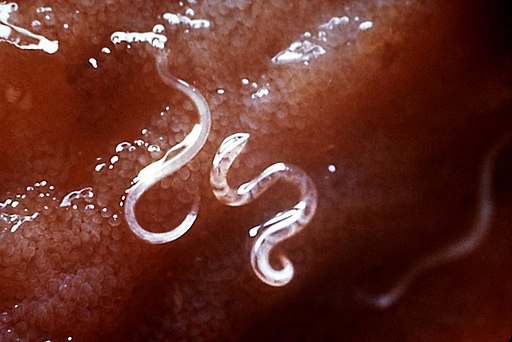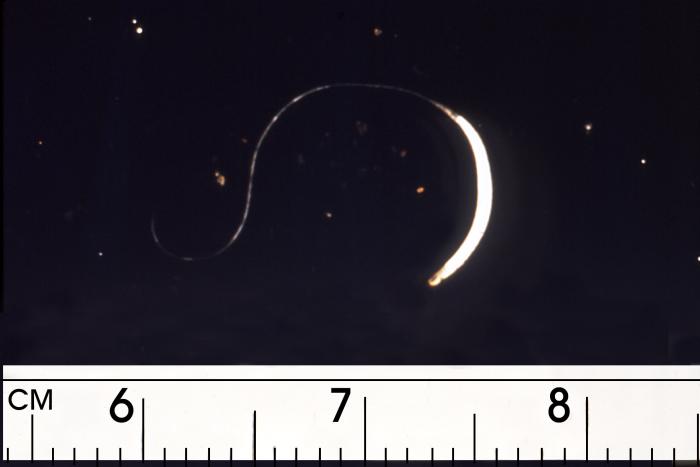Few dog owners pay close attention to dog worms; they often go unnoticed, with few symptoms to detect. But they should never be overlooked. As part of a three-part series, today we'll explore exactly what dog worms are.
This post is the first in a series of three articles we'll bring to you, to explain everything you need to know about dog worms and deworming your dog.
Over the next two posts, we will explore why it's imperative to be aware of dog worms and how to diagnose and control them in your animal.
But first, let’s find out more about dog worms!
Dog worms: what do they look like and how do they survive
The common understanding of a worm is a long and thin invertebrate, with a soft, slippery body and no limbs that lives in the ground. Despite sharing a similar long and cylindrical-shaped body, dog worms are somewhat different.
A parasite that feeds on their host, dog worms live within the body, in the digestive tract or bloodstream of the animal. In medical science, they are referred to as 'helminths'.
In dogs (and in cats), there are two main categories of worms:
- Nematodes (round worms); and
- Cestodes (tapeworms).
Nematodes
The most frequent nematodes encountered in dogs are roundworms, hookworms, whipworms and heartworms. It's important to know their Latin names as these are what you will predominantly read in leaflets and on box packaging.
Typically, infestations start with the ingestion of infecting eggs, except in the case of heartworms.
ROUNDWORMS (Toxocara canis and Toxascaris leonina)
This is probably the most important worm to be aware of because it is also the most frequent in dogs. Left untreated, it is very harmful to dogs (especially puppies), and can also be transmitted to humans.
Adult Toxocara are white worms, about 10-15cm in length. You won’t be able to miss it if it’s excreted in your dog’s faeces, although this happens rarely. It feeds on nutrients that pass through the dog’s intestine tract.
The remarkable characteristic of Toxocara is that they can be transmitted by a mother to her puppies via her milk, or more frequently in utero. This explains why many puppies are already infested at birth and why vets and reputable breeders advise to deworm puppies early, at about two weeks old.

HOOKWORMS (Uncinaria stenocephala and Ancylostoma caninum)
These are small, thin, pale worms 1-2cm in length that latch onto the dog’s small intestine mucosa. They also feed on dog’s blood. A Hookworm’s life cycle is very similar to the Toxocara; infestation of puppies originates from the mother, most often via her milk.
They may also encyst in an adult dog's tissue. One remarkable feature is their ability to contaminate their host by penetrating through this tissue into the bloodstream.
WHIPWORMS (Trichuris vulpis)
Whipworms are long (4-8cm) and very thin worms that are very difficult to spot in the faeces, even when a large infestation exists. They are so-called due to their very thin anterior (about 3/4s of the body) and their whip-like posterior.
Whipworms feed on blood. They begin their lifecycle as eggs, ingested orally by their host. They then develop, feed and reproduce in the small intestine. The eggs can resist very hostile environments, and can survive in excreted faeces, and subsequently soil, for years. They are frequently found in kennels.
HEARTWORMS (Dirofilaria immitis)
It goes without saying that heartworms are quite dreadful! They illustrate the impressive diversity in the strategies helminths use to attack their hosts.
These are very long worms that, once adults, live in the dog’s heart. Adult males can be up to 20cm long and females up to 30cm. Unlike all other worms, they never pass through the digestive tract, but in the bloodstream.
Heartworms are transmitted by many species of mosquitoes where they develop their development. When a mosquito bites a dog, it lays heartworm larvae (microfilariae) on the skin. The larvae penetrate the body through the mosquito’s bite and continue their maturation for about 6-9 months before, as an adult, it reaches larger blood vessels on its way to the heart.
A heartworm may live in a dog’s heart for 5-7 years.
Cestodes (tapeworms)
All cestodes, also known as tapeworms, share common characteristics:
- They have a flat, ribbon shaped morphology
- They are segmented, with the last compartment containing the eggs (excreted in faeces)
- They require 2 hosts to reach development: the first to be ingested by the final host (e.g. a dog)
- They feed on nutriments found in a dog’s intestinal tract (they do not feed off blood)
- They have almost no impact on a dog’s health
As the final host, a dog needs to ingest the intermediate host’s raw meat to become infected.
Cestodes differ in both type and size depending on the type of intermediate host they infest. The type of cestodes dogs are susceptible to are listed in the table below.
TAPE WORMS | INTERMEDIATE HOST | ADULT SIZE |
Taenia pisiformis | Rabbits, hare | 0.5 to 2m |
Taenia hydatigena | Sheep, horse, cattle, pig, deer | Up to 5m |
Taenia ovis | Sheep, goats | Up to 1m |
Taenia serialis | Rabbits | Up to 5m |
Taenia multiceps | Rodents, rabbits, horses, cattle, sheep and goats | Up to 1m |
Dipylidium caninum | Fleas | Up to 50cm |
Echinococcus granulosus | Sheep, cattle, horses, pigs, goats, and camels | 3 to 6mm |
Echinococcus multilocularis | Rodents | 3 to 6mm |
DIPYLIDIUM (Dipylidium caninum)
These are very long worms that are more than 1m long. You may occasionally find segments in dogs’ faeces, which contain the eggs that then re-contaminate the intermediate hosts.
The Dipylidium is a very common worm, identifiable by its white segments easily found in dog's faeces or near their anus. The segments are mobile and you may see them moving on the dog’s coat.
It turns out that fleas are the intermediate hosts for Dipylidium. Therefore, if you detect small white sticks in your dog’s faeces resemble grains of rice, you can be sure that has both Dipylidium and fleas.
ECHINOCOCCUS (Echinococcus granulosus, Echinococcus multilocularis)
Echinococcus are very small worms, about 2-8mm in length. Their segments are very small and can’t be seen by the naked eye. They are also very rare in dogs. However, they are known for their serious effects on humans.
Conclusion
If you got this far, we're guessing you now know a lot more about dog worms. Each are very different with unique strategies to survive, infest their hosts, and reproduce.
It's certainly not a nice thought knowing that these creatures can live inside the body of our four-legged friends. But don't worry, we've got you covered in our next two posts.
Coming up next is why you need to be aware of dog worms, where we will explain how they can affect your dog’s health and even yours!
Stay tuned…
Source: Gilles Ventejol
Gilles Ventejol has more than 20 years' marketing experience in the animal health industry. He has launched new veterinary medicines, led prospective work on new drugs development, and organised international events in the animal health space. He has also written countless materials for vets and owners, including reports, articles, guides and brochures, and produced video content and website material.



